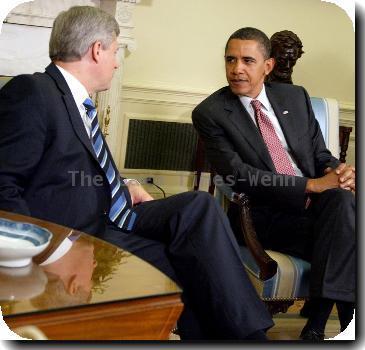AP source: US believes No. 3 al-Qaida official dead in Predator drone attack recently
By Kimberly Dozier, APMonday, May 31, 2010
AP source: US thinks No. 3 al-Qaida official dead
WASHINGTON — Al-Qaida’s No. 3, Mustafa Abu al-Yazid, is believed to have been killed by a U.S. Predator drone strike in what could be one of the heaviest blows inflicted upon the terrorist organization, a U.S. official says.
Al-Yazid, also known as Sheik Saeed al-Masri, was al-Qaida’s prime conduit to Osama bin Laden and Ayman al-Zawahiri, and he was key to day-to-day control, with a hand in everything from finances to operational planning, the U.S. official said.
The official, who spoke Monday on condition of anonymity in order to discuss sensitive operations, said word was “spreading in extremist circles” of al-Yazid’s death in Pakistan’s tribal areas in the past two weeks.
There were multiple postings on Jihadist websites by al-Qaida’s so-called General Command, announcing his death, according to both the IntelCenter and SITE Intelligence Group. SITE said Monday’s announcement also stated that his wife, three of his daughters, his granddaughter, and other men women and children were killed.
Al-Yazid has been reported killed before, in 2008, but this is the first time his death has been acknowledged by the militant group on the Internet.
The official said his death would be a major setback for al-Qaida, which in December “lost both its internal and external operations chiefs.”
Al-Yazid has been one of many targets in a U.S. Predator drone campaign aimed at militants in Pakistan since President Barack Obama took office. The Egyptian-born militant made no secret of his contempt for the United States, once calling it “the evil empire leading crusades against the Muslims.”
“We have reached the point where we see no difference between the state and the American people,” al-Yazid told Pakistan’s Geo TV in a June 2008 interview. “The United States is a non-Muslim state bent on the destruction of Muslims.”
The shadowy, 55-year-old al-Yazid has been involved with Islamic extremist movements for nearly 30 years since he joined radical student groups led by fellow Egyptian al-Zawahiri, now the No. 2 figure in al-Qaida after bin Laden.
In the early 1980s, al-Yazid served three years in an Egyptian prison for purported links to the group responsible for the 1981 assassination of Egyptian President Anwar Sadat. After his release, al-Yazid turned up in Afghanistan, where, according to al-Qaida’s propaganda wing Al-Sabah, he became a founding member of the terrorist group.
He later followed bin Laden to Sudan and back to Afghanistan, where he served as al-Qaida’s chief financial officer, managing secret bank accounts in the Persian Gulf that were used to help finance the Sept. 11, 2001, attacks on New York and Washington. After the U.S. and its allies invaded Afghanistan in 2001, al-Yazid went into hiding for years. He surfaced in May 2007 during a 45-minute interview posted on the Web by Al-Sabah, in which he was introduced as the “official in charge” of the terrorist movement’s operations in Afghanistan.
Some security analysts believe the choice of al-Yazid as the Afghan chief may have signaled a new approach for al-Qaida in the country where it once reigned supreme.
Michael Scheuer, former head of the CIA unit that tracked bin Laden, believes bin Laden and al-Zawahiri wanted a trusted figure to handle Afghanistan “while they turn to other aspects of the jihad outside” the country.
Al-Yazid had little background in leading combat operations. But terrorism experts say his advantage was that he was close to Taliban leader Mullah Omar. As a fluent Pashto speaker known for impeccable manners, al-Yazid enjoyed better relations with the Afghans than many of the al-Qaida Arabs, whom the Afghans found arrogant and abrasive.
That suggested a conscious decision by al-Qaida to embed within the Taliban organization, helping the Afghan allies with expertise and training while at the same time putting an Afghan face on the war.
Al-Yazid himself alluded to such an approach in an interview this year with Al-Jazeera television’s Islamabad correspondent Ahmad Zaidan. Al-Yazid said al-Qaida fighters were involved at every level with the Taliban.
“We participate with our brothers in the Islamic Emirate in all fields,” al-Yazid said. “This had a big positive effect on the (Taliban) self-esteem in Afghanistan.”
A September 2007 al-Qaida video sought to promote the notion of close Taliban-al-Qaida ties at a time when the Afghan insurgents were launching their comeback six years after their ouster from power in Kabul.
The video showed al-Yazid sitting with a senior Taliban commander in a field surrounded by trees as a jihad anthem played. The Taliban commander vowed to “target the infidels in Afghanistan and outside Afghanistan” and to “focus our attacks, Allah willing, on the coalition forces in Afghanistan.”
There is also evidence that al-Yazid has promoted ties with Islamic extremist groups in Central Asia and Pakistan, where other top al-Qaida figures are believed to be hiding.
“He definitely seems to have significant influence among the Pakistani Taliban and the Central Asian groups,” terrorism expert Evan Kohlman said. “They regularly post and share his videos on the Web, just as they would with bin Laden or al-Zawahiri.”
Associated Press writer Adam Goldman contributed to this report.
Tags: Afghanistan, Asia, Barack Obama, Central Asia, North America, Pakistan, South Asia, Terrorism, United States, Washington



